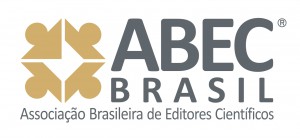Exclusive breastfeeding and the use of kangaroo slings among full-term infants between their first and second months of age
DOI:
https://doi.org/10.5216/ree.v26.76915Keywords:
Kangaroo-mother care method, Breast feeding, Infant, Newborn, Self efficacyAbstract
Objectives: to verify the association between kangaroo slings used from maternity hospital to home, and exclusive breastfeeding among healthy full-term babies between the 1st and 2nd months of age; to identify breastfeeding self-efficacy level of those mothers using a kangaroo sling. Method: this cross-sectional study addressed mothers who received a kangaroo sling after giving birth, at maternity hospital, and were instructed to keep the babies in this posture at least one hour daily. The frequency with which the mothers used the kangaroo sling, breastfeeding self-efficacy, and the type of feeding were investigated between one and two months after delivery. ꭓ2 or Fisher’s exact test and Cramer’s V coefficient (p < 0.05) were adopted in the analysis. Results: ninety-eight mothers participated in the study. All of them used the kangaroo sling in rooming-in; 39.8% used it three or more times a week at home between the 1st and 2nd months after giving birth; 70.4% of the babies remained on Exclusive Breastfeeding (EBF), the level of breastfeeding self-efficacy was high, and EBF was associated with the use of a kangaroo sling at home (p = 0.014). Conclusion: healthy full-term babies can benefit from using a kangaroo sling, starting at the maternity hospital and extending its use to home.
Downloads
References
Karimi FZ, Miri HH, Khadivzadeh T, Maleki-Saghooni N. The effect of mother-infant skin-to-skin contact immediately after birth on exclusive breastfeeding: a systematic review and meta-analysis. J Turk Ger Gynecol Assoc. 2020 Mar;21(1):4656. https://doi.org/10.4274/jtgga.galenos.2019.2018.0138
World Health Organization (WHO). Implementation guidance: protecting, promoting and supporting breastfeeding in facilities providing maternity and newborn services:the revised baby-friendly hospital initiative [Internet]. Geneva: World Health Organization; 2018 [cited 2023 July 28]. Available from: https://apps.who.int/iris/bitstream/handle/10665/272943/9789241513807-eng.pdf
Kahalon R, Preis H, Benyamini Y. Mother-infant contact after birth can reduce postpartum post-traumatic stress symptoms through a reduction in birth-related fear and guilt. J Psychosom Res. 2022;154:110716. https://doi.org/10.1016/j.jpsychores.2022.110716
Karimi FZ, Sadeghi R, Maleki-Saghooni N, Khadivzadeh T. The effect of mother-infant skin to skin contact on success and duration of first breastfeeding: a systematic review and meta-analysis. Taiwan J Obstet Gynecol. 2019 Jan;58(1):1-9. https://doi.org/10.1016/j.tjog.2018.11.002
Brasil. Ministério da Saúde. Secretaria de Atenção à Saúde. Departamento de Ações Programáticas Estratégicas. Atenção humanizada ao recém-nascido: método canguru. Manual técnico [Internet]. 3a ed. Brasília: Ministério da Saúde; 2017 [cited 2021 Apr 7]. Available from: http://bvsms.saude.gov.br/bvs/publicacoes/atencao_humanizada_metodo_canguru_manual_3ed.pdf
Wu HL, Lu DF, Tsay PK. Rooming-in and breastfeeding duration in first-time mothers in a modern postpartum care center. Int J Environ Res Public Health. 2022 Sept;19(18):11790. https://doi.org/10.3390/ijerph191811790
Dong Q, Steen M, Wepa D, Eden A. Exploratory study of fathers providing Kangaroo Care in a Neonatal Intensive Care Unit. J Clin Nurs. 2022 June. https://doi.org/10.1111/jocn.16405
Dodt RCM, Ximenes LB, Almeida PC, Oriá MOB, Dennis CL. Psychometric and maternal sociodemographic assessment of the breastfeeding self-efficacy scale - short form in a brazilian sample. J Nurs Educ Pract. 2012;2(3):66-73. https://doi.org/10.5430/jnep.v2n3p66
Dodt RCM. Aplicação e validação da breastfeeding selfefficacy scale – short form (BSES-SF) em puérperas [dissertação]. Fortaleza: Universidade Federal do Ceará; 2008.
Akoglu H. User’s guide to correlation coefficients. Turk J Emerg Med. 2018 Aug;18(3):91-3. https://doi.org/10.1016/j.tjem.2018.08.001
Norholt H, Price C, Phillips R, McNeilly R. Babywearing practices and effects on parental, child physical and psychological health. Acad J Ped Neonatol. 2022 June;11(5):555876. https://doi.org/10.19080/AJPN.2022.11.555876
Braga RRGS, Siqueira KM, Salge AK, Lima LG, Castral TC. Percepções maternas sobre o uso da bolsa canguru em bebês a termo saudáveis em maternidade e domicílio: uma investigação apreciativa. Rev Eletr Enferm. 2022 Dec;24:71351. https://doi.org/10.5216/ree.v24.71351
Little EE, Legare CH, Carver LJ. Culture, carrying, and communication: beliefs and behavior associated with babywearing. Infant Behav Dev. 2019;57:101320. https://doi.org/10.1016/j.infbeh.2019.04.002
Pisacane A, Continisio P, Filosa C, Tagliamonte V, Continisio GI. Use of baby carriers to increase breastfeeding duration among term infants: the effects of an educational intervention in Italy. Acta Paediatr. 2012 Oct;101(10):e434–8. https://doi.org/10.1111/j.1651-2227.2012.02758.x
Brasil. Ministério da Saúde. Secretaria de Atenção à Saúde. Departamento de Atenção Básica. Saúde da criança: nutrição infantil. Aleitamento materno e alimentação complementar [Internet]. Brasília: Ministério da Saúde; 2009 [cited 2023 July 27]. Available from: https://bvsms.saude.gov.br/bvs/publicacoes/saude_crianca_nutricao_aleitamento_alimentacao.pdf
Universidade Federal do Rio de Janeiro. Aleitamento materno. Prevalência e práticas de aleitamento materno em crianças brasileiras menores de 2 anos. ENANI 2019 [Internet]. Rio de Janeiro: UFRJ; 2021 [cited 2023 July 28]. Available from: https://enani.nutricao.ufrj.br/wp-content/uploads/2021/11/Relatorio-4_ENANI-2019_Aleitamento-Materno.pdf
Oriá MOB, Ximenes LB, Almeida PC, Glick DF, Dennis CL. Psychometric assessment of the Brazilian version of the Breastfeeding Self-Eficacy Scale. Public Health Nurs. 2009 Nov-Dec;26(6):574-83. https://doi.org/10.1111/j.1525-1446.2009.00817.x
Tavares MC, Aires JS, Dodt RCM, Joventino ES, Oriá MOB, Ximenes LB. Application of Breastfeeding Self-Efficacy Scale-Short Form to post-partum women in rooming-in care: a descriptive study. Online Braz J Nurs. 2010 Mar;9(1):1-13. https://doi.org/10.5935/1676-4285.20102717
Norrish I, Sindi A, Sakalidis VS, Lai CT, McEachran JL, Tint MT, et al. Relationships between the intakes of human milk components and body composition of breastfed infants: a systematic review. Nutrients. 2023 May;15(10):2370. https://doi.org/10.3390/nu15102370
Alves YR, Couto LL, Barreto ACM, Quitete JB. Breastfeeding under the umbrella of support networks: a facilitative strategy. Esc Anna Nery. 2020;24(1):e20190017. https://doi.org/10.1590/2177-9465-EAN-2019-0017
Rimes KA, Oliveira MIC, Boccolini CS. Maternity leave and exclusive breastfeeding. Rev Saúde Pública. 2019;53:10. https://doi.org/10.11606/S1518-8787.2019053000244
Khan MS. Paid family leave and children health outcomes in OECD countries. Child Youth Serv Rev. 2020 Sept;116:105259. https://doi.org/10.1016/j.childyouth.2020.105259
Victora CG, Bahl R, Barros AJD, França GVA, Horton S, Krasevec J, et al. Breastfeeding in the 21st century: epidemiology, mechanisms, and lifelong effect. Lancet. 2016 Jan;387(10017):47590. https://doi.org/10.1016/S0140-6736(15)01024-7
Mulcahy H, Philpott LF, O’Driscoll M, Bradley R, LeahyWarren P. Breastfeeding skills training for health care professionals: a systematic review. Heliyon. 2022 Nov:8(11):e11747. https://doi.org/10.1016/j.heliyon.2022.e11747
Grant A, Pell B, Copeland L, Brown A, Ellis R, Morris D, et al. Views and experience of breastfeeding in public: a qualitative systematic review. Matern Child Nutr. 2022 Oct;18(4):e13407. https://doi.org/10.1111/mcn.13407
Almeida LMN, Goulart MCL, Goés FGV, Ávila FMVP, Pinto CB, Naslausky SG. A influência do retorno ao trabalho no aleitamento materno de trabalhadoras da enfermagem. Esc Anna Nery. 2022;26:e20210183. https://doi.org/10.1590/2177-9465-EAN-2021-0183
Raissian KM, Su JH. The best of intentions: prenatal breastfeeding intentions and infant health. SSM Popul Health. 2018 Jun;5:86-100. https://doi.org/10.1016/j.ssmph.2018.05.002
Carrasco Salazar P, Márquez-Doren F, Lucchini-Raies C. Significado de la experiencia materna en torno al apoyo durante su proceso de amamantamiento. Enfermería (Montevideo). 2021;10(2):3-28. https://doi.org/10.22235/ech.v10i2.2422
Downloads
Published
Issue
Section
License
Copyright (c) 2024 Revista Eletrônica de Enfermagem

This work is licensed under a Creative Commons Attribution 4.0 International License.














